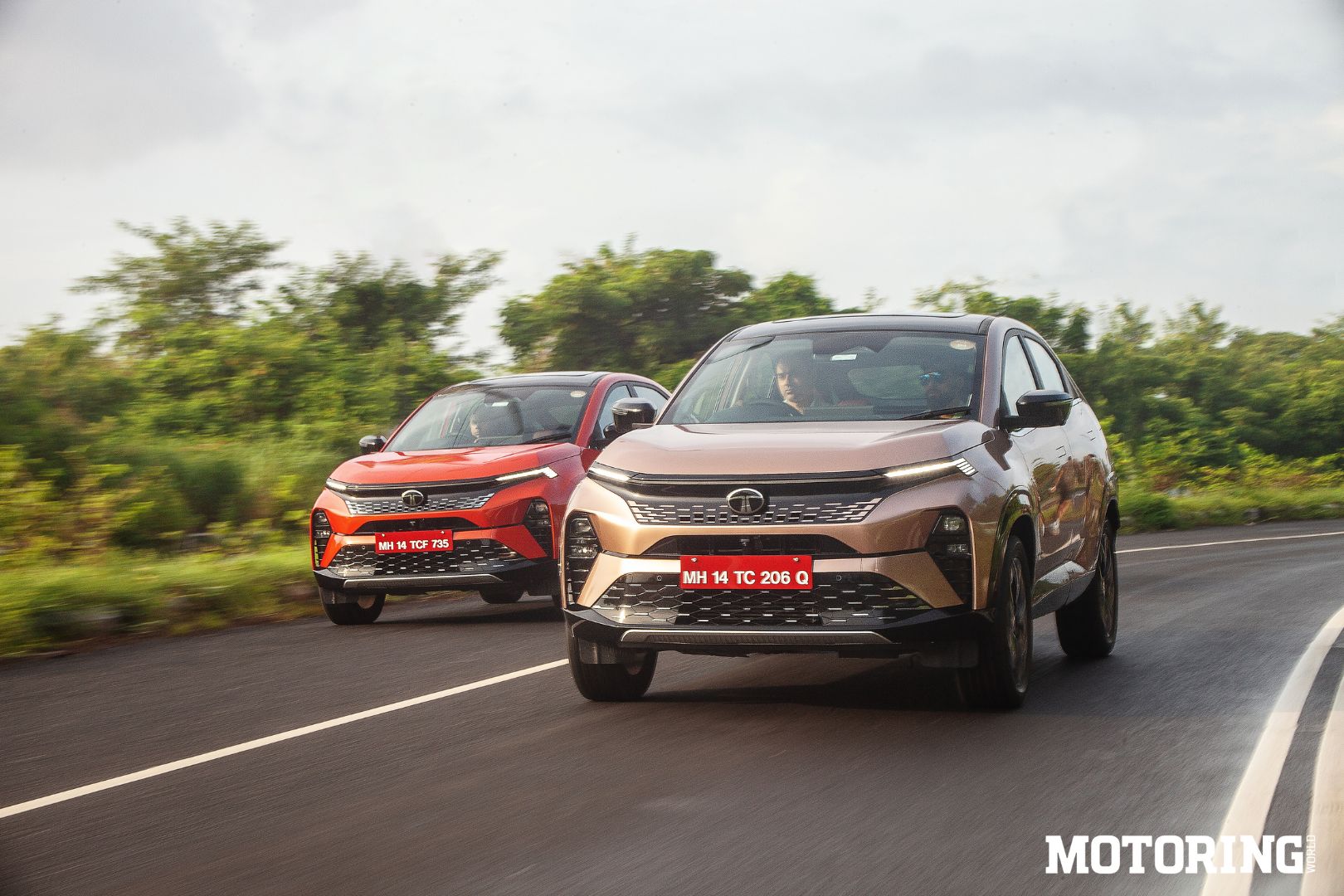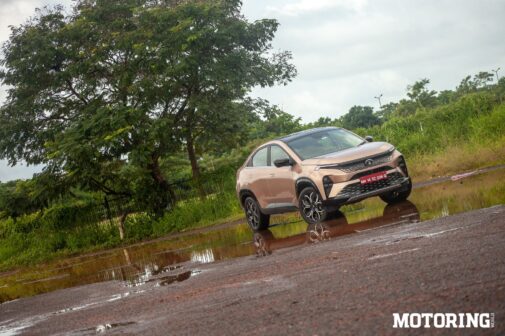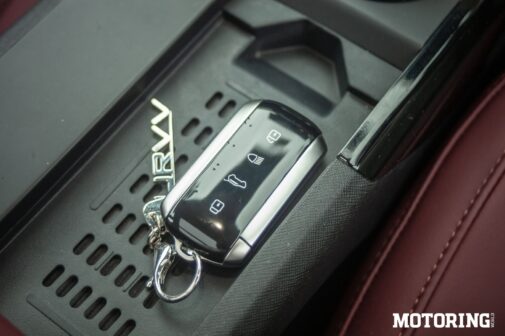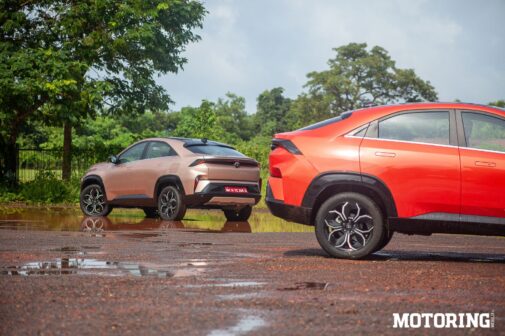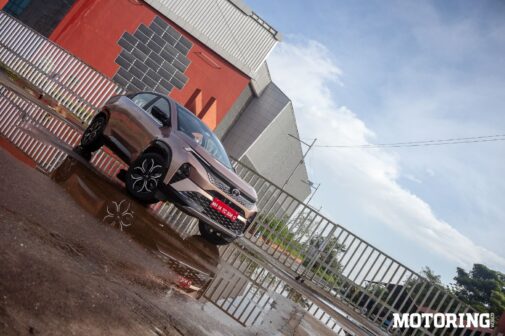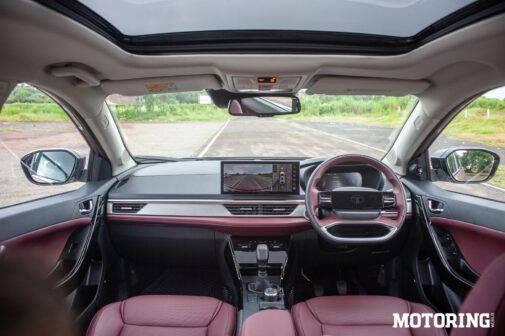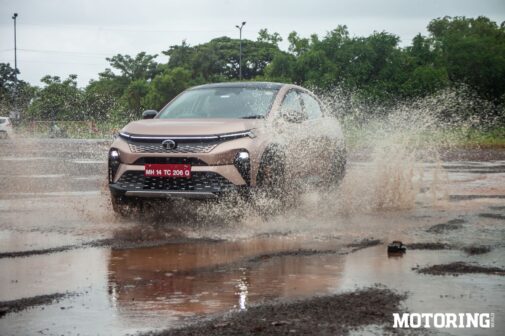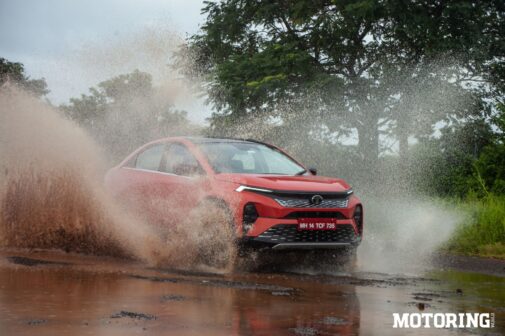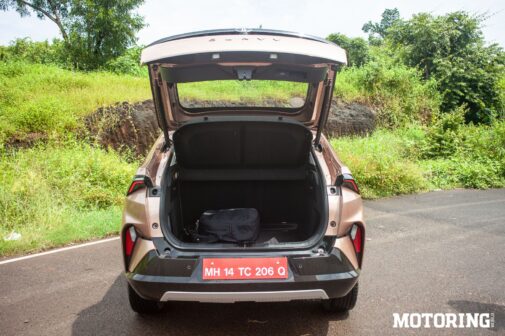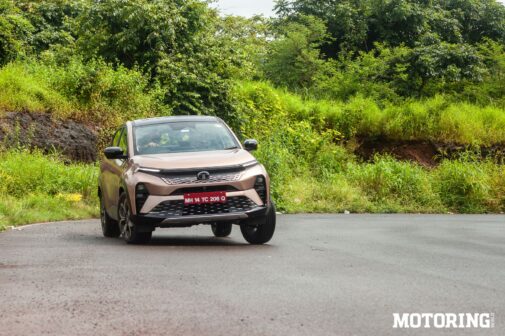The SUV coupe segment seems to have seen a sudden peak in interest among a few manufacturers of late. Could it just be the fact that there is a desire to capitalise on something fairly fresh, or is there actually public interest invested in the segment? The answer, in all probability, is the former, because nobody really asked for a mass-market SUV coupe, but clearly Tata (and Citroen) think they should exist. That being said, the Tata Curvv does make a good first impression in person, visually at least, and better than what photographs suggested.
Looking at the design of the Curvv, it feels a bit busy in some sections — mainly the tail and nose, but overall, it comes together well enough and makes it stand out. All the curves and edges seem to sit just right, giving it a pretty muscular stance. And since we’re already familiar with the basic outline, courtesy of the Curvv.ev, other than the new grille and wheels, there’s nothing that we haven’t already seen. In terms of how the car looks, the wheel arches needed to have been filled out better, because right now it still looks like the Curvv has been skipping leg day. The sloping roofline means that there is less headroom for tall people in the back, especially considering that the panoramic sunroof eats into that, too. The back row will feel cramped for three people but will seat two comfortably for the most part.
Coming to the interior, while the look and feel of the cabin is classy and premium, especially with that burgundy upholstery, the piano-black surfaces found in abundance, both inside and out, are dirt and smudge magnets. The fit and finish are good, save for a few alignment issues and gaps here and there. This is probably a personal preference, but we would have loved to see more dials and switches rather than touch interfaces, especially on the piano-black surfaces. The 12-inch touchscreen infotainment system did suddenly spazz out once during the drive but was otherwise fairly smooth to use. There is a distinct touch of luxury felt on the inside of the car.
You get a 6-way power adjustment for the driver’s seat, and both front occupants get ventilated seats. The view out of the IRVM in the Curvv is restricted because of the small rear windscreen, but it does come with a 360-degree camera. The navigation and media displays are mirrored on the instrumentation, so that seemed pretty useful. Tata’s iRA app lets you remotely control functions on the Curvv like lock/unlock, AC, engine start/stop and much more. It also sends you updates if your car crosses the speed limit (which might have happened once or twice during our time with the car). The Curvv also gets other features, including a JBL audio system, voice commands, a wireless charger and a powered tailgate with gesture controls that open up the 500-litre boot.
Now, we drove both the petrol as well as the diesel top-end variants, of which both engines are technically new. The 1.2-litre direct-injection turbo-petrol Hyperion engine comes with a 6-speed manual transmission and is slightly gruff in sport mode, and the torque boost function is useful while overtaking. The clutch is pretty snappy, so it did take a while to get used to, and the gear knob is on the taller side, requiring a longer throw. This is in contrast to the 1.5-litre diesel Kryojet engine with the 7-speed DCA, which feels much smoother, but not as peppy. It also gets paddle shifters for a more involving driving experience, but there is still a noticeable lag with the DCA. There is also a 1.2-litre, three-cylinder turbo-petrol engine option, pushing 118 bhp that has been carried forward from the Tata Nexon, but we didn’t get to drive that.
In eco mode, both powertrains feel reined in, and very much like a sensible older sibling, but turn the dial to sport mode and there bursts in the unruly younger sibling right on cue. City mode is a fine balance between the two, composed and sprightly. The engines feel pretty refined, but for a bit of whirring and whining that was audible now and then. The DCA in the diesel automatic, apart from having a little lag, also felt slightly jerky at low speeds, and we couldn’t really figure out why. Now, we know that the Curvv can go, and when it needs to come to a halt, it does so with confidence, courtesy of disc brakes on all four wheels in the top-spec variants.
The ride quality felt slightly out of sync on both the models, with the petrol manual feeling more so. There was a distinct floating of the rear, while the front felt stiff, which translated to the bumps and undulations being transferred directly to the occupants. This was felt less in the diesel, which smoothed things out better. The steering input and feedback also felt better in the diesel, while the same was a bit vague in the petrol. The Curvv is underpinned by Tata’s ATLAS platform, which features high-strength materials in select areas for optimum safety as well as handling in mind. Given the ground clearance and the body architecture, body roll and understeer are evident, but well within acceptable limits. The overall comfort and driveability also feel pretty sorted, keeping in mind the regular Indian driving conditions. The ventilated seats do quite a number on the comfort factor, while the contours are very supportive for someone of medium build.
In conclusion, the Tata Curvv is quite an interesting offering, and given the option, we would pick the diesel over the petrol, which initially was surprising even to us, the reason being that it feels more refined and manageable. With the base variant available at about 10 lakh, ex-showroom, it is, most importantly, a safe option, which is the main reason we would buy one over a Citroen Basalt, a Hyundai Creta, or even a Kia Seltos. Furthermore, with there being around 34 different permutations and combinations to choose from, the customer gets the option of picking a car that suits their needs.





